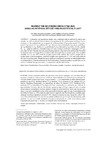Use este identificador para citar ou linkar para este item:
http://www.alice.cnptia.embrapa.br/alice/handle/doc/463622Registro completo de metadados
| Campo DC | Valor | Idioma |
|---|---|---|
| dc.contributor.author | PANIZZI, A. R. | pt_BR |
| dc.contributor.author | PARRA, J. R. P. | pt_BR |
| dc.contributor.author | SANTOS, C. H. | pt_BR |
| dc.contributor.author | CARVALHO, D. R. | pt_BR |
| dc.date.accessioned | 2011-04-09T17:14:57Z | - |
| dc.date.available | 2011-04-09T17:14:57Z | - |
| dc.date.created | 2003-04-16 | pt_BR |
| dc.date.issued | 2000 | pt_BR |
| dc.identifier.citation | Pesquisa Agropecuária Brasileira, Brasília, v. 35, n. 9, p. 1709-1715, set.2000. | pt_BR |
| dc.identifier.uri | http://www.alice.cnptia.embrapa.br/alice/handle/doc/463622 | pt_BR |
| dc.description | Laboratory and greenhouse studies were conducted with an artificial dry diet to rear nymphs, and with an artificial plant as substrate for egg laying by the southern green stink bug, Nezara viridula (L.). The artificial diet was composed of: soybean protein (15 g); potato starch (7.5 g); dextrose (7.5 g); sucrose (2.5 g); cellulose (12.5 g); vitamin mixture (niacinamide 1 g, calcium pantothenate 1 g, thiamine 0.25 g, riboflavin 0.5 g, pyridoxine 0.25 g, folic acid 0.25 g, biotin 0.02 mL, vitamin B12 1 g ? added to 1,000 mL of distilled water) (5.0 mL); soybean oil (20 mL); wheat germ (17.9 g); and water (30 mL). Nymphs showed normal feeding behavior when fed on the artificial diet. Nymphal development time was longer than or similar to that of nymphs fed on soybean pods. Total nymphal mortality was low (ca. 30%), both for nymphs reared on the artificial diet, and for nymphs fed on soybean pods. At adult emergence, fresh body weights were significantly (P<0.01) less on the artificial diet than on soybean pods. Despite the lower adult survivorship and fecundity on artificial plants than on soybean plants, it was demonstrated for the first time that a model simulating a natural plant, can be used as a substrate for egg mass laying, in conjunction with the artificial diet. | pt_BR |
| dc.language.iso | eng | eng |
| dc.rights | openAccess | eng |
| dc.title | Rearing the southern green stink bug using an artificial dry diet and an artificial plant. | pt_BR |
| dc.type | Artigo de periódico | pt_BR |
| dc.date.updated | 2011-04-10T11:11:11Z | pt_BR |
| riaa.ainfo.id | 463622 | pt_BR |
| riaa.ainfo.lastupdate | 2003-04-16 | pt_BR |
| Aparece nas coleções: | Artigo em periódico indexado (CNPSO)  | |
Arquivos associados a este item:
| Arquivo | Descrição | Tamanho | Formato | |
|---|---|---|---|---|
| pab20288.pdf | 252,26 kB | Adobe PDF |  Visualizar/Abrir |









